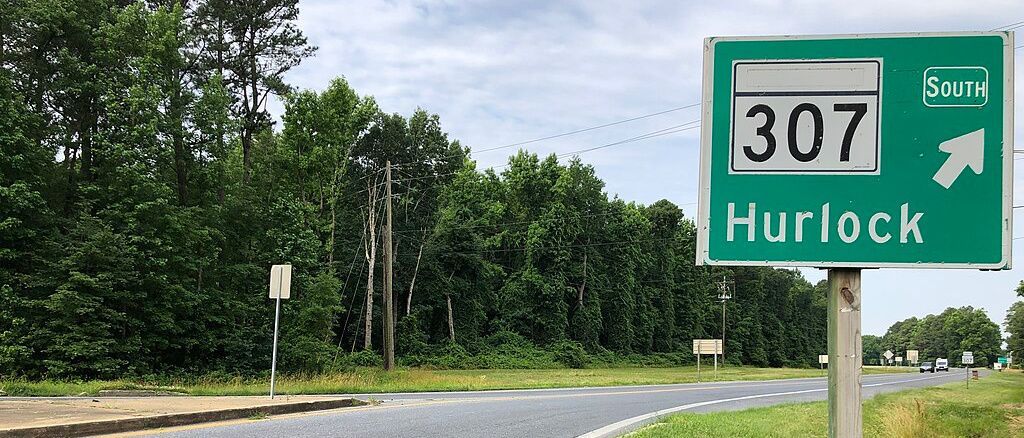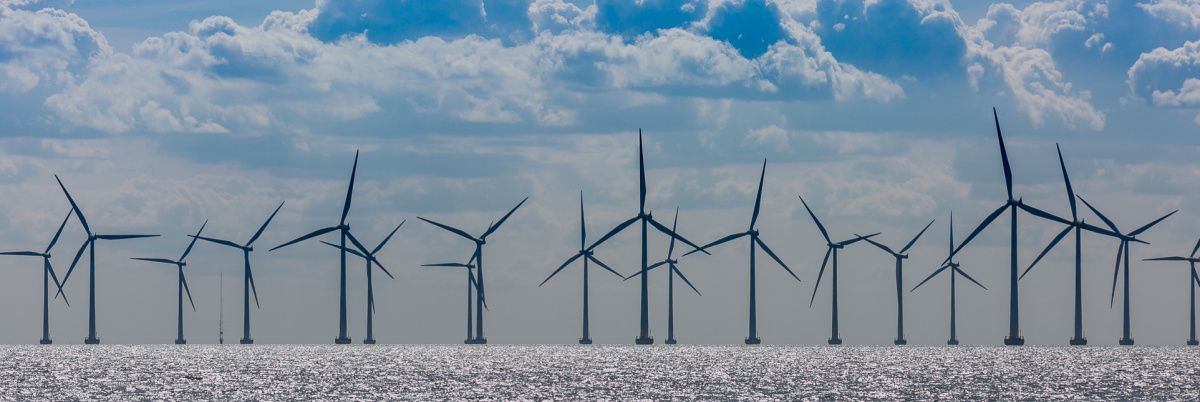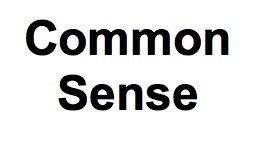Candidates and Climate Change and the Environment — A Guide to the Maryland Primary

Common Sense for the Eastern Shore is reporting the statements of the candidates for governor and lieutenant governor of Maryland, and for representative for the First Congressional District, which includes all of the Eastern Shore. Taken from the candidates’ websites, here are excerpts outlining their positions on climate change and the environment. Links to the websites are provided for readers who want to explore the candidates’ full statements.
The primary election is scheduled for Tuesday, July 19. Only residents who have registered their political party preference are eligible to vote, and they may only vote for their party’s candidates. Thus Democrats may only vote for Democratic candidates, and Republicans only for Republican candidates.
Governor/Lieutenant Governor
In a nutshell, Republican gubernatorial candidates do not, as a group, enumerate climate change and environmental issues as a priority. Most of the Democratic candidates, on the other hand, have plans and positions for addressing climate change and preserving the environment.
According to a recent poll conducted by Food & Water Action and Friends of the Earth Action, most Democratic candidates are in favor of hastening the transition away from fossil fuels in the state, including ending all new development of fossil fuel infrastructure. Of the Republican candidates, only Robin Ficker responded to the poll, saying he would only support discontinuing fossil fuel infrastructure development “if alternatives are available.”
Dan Cox + Gordana Schifanelli — Republican
Dan Cox, an extremist, ultra-right wing candidate, does not have a stated position on climate change or the environment on this website. He is endorsed by Donald Trump.
Robin Ficker + LeRoy F. Yegge, Jr. — Republican
Robin Ficker’s website reveals nothing about what the candidate’s position is on environmental matters or climate change.
Kelly Schulz + Jeff Woolford — Republican
www.kellyschulzforgovernor.com
Kelly Schulz does not address climate change or environmental protection on her candidate website. Instead, she lists only these three issues: supporting the police so people feel safe; making the schools accountable to parents, including individual decision-making on masks and vaccines; and, most of all, cutting taxes. She is endorsed by Gov. Larry Hogan, and served as Secretary of Labor and Commerce in his administration.
Joe Werner + Minh Thanh Luong — Republican
Joe Werner’s major issues do not include anything connected with the environment or climate change.
Rushern Baker III + Nancy Navarro — Democrat
Rushern Baker’s website acknowledges that climate change is an emergency and dealing with it should not be put off. His plan for addressing climate change includes:
- 100% renewable energy by 2030
- Supporting the Environmental Human Rights Amendment to protect communities that are disproportionately harmed by the effects of climate change.
Jon Baron + Natalie Williams — Democrat
Jon Baron feels we need urgent action to fight the climate crisis. If he is elected governor, he plans to:
- Join the new Transportation and Climate Initiative program, to lower emissions through a cap-and-trade approach;
- Ensure that low-income and rural communities are not adversely affected by climate policies;
- Set ambitious carbon emissions standards for government buildings and transportation vehicles;
- Provide seed funding to early-stage green tech start-ups to help make Maryland a leader in green technology development;
- Promote sustainable investment through Environmental Impact Bonds, to help local governments fund green infrastructure and environmental resilience projects.
Peter Franchot + Monique Anderson-Walker — Democrat
Peter Franchot pledges to address the environment and climate change by:
- Making Maryland the first net zero state in the U.S. and a net supplier of renewable energy;
- Finally guaranteeing a healthy future for the Chesapeake Bay, by adding a billion adult oysters to the watershed; creating an international scientific competition for innovative, affordable solutions to solve the problems of pollution in the Bay; addressing stormwater runoff; strengthening state smart growth regulations; and preserving Maryland’s tree canopy.
Douglas F. Gansler + Candace Hollingsworth — Democrat
Doug Gansler’s Green Maryland Plan will invest in and incentivize renewable energy development, preserve Maryland’s green spaces, ensure a just transition in clean energy standards for Maryland’s public transportation, and break down environmental inequities. Among other things, he would:
- Impose a five-year, statewide moratorium on new residential, commercial, and industrial development located within the Chesapeake Bay Critical Area;
- Significantly strengthen the standards for adequate wastewater treatment plants and increase the Maryland Department of the Environment’s inspection and compliance capabilities;
- Provide state technical and funding support for cities and towns to establish clean energy “microgrids” that will provide renewable energy and make smaller communities more economically viable;
- Work with our neighboring states toward the creation of an independent Conowingo Dam Authority, which would have the ability to implement policies to prevent sediment, harmful nutrients, and dangerous debris from reaching the Chesapeake Bay.
Ralph W. Jaffe + Mark Greben — Democrat
www.fedupwithcrookedpolitics.com
There are no obvious policies addressing climate change or the environment on Jaffe’s campaign website.
Ashwani Jain + LaTrece Hawkins Lytes — Democrat
In order to protect the Bay, Jain would:
- Increase the frequency of poultry farm inspections
- Limit the use of poultry manure
- Invest in more stormwater retention systems
- Undertake oyster restoration
- Set stricter safe drinking water standards and testing for private wells
In order to address climate change, Jain would:
- Invest in clean and renewable energy
- Increase the fossil fuel fee
- Focus on climate justice
John King + Michelle Daugherty Siri — Democrat
Jon King has detailed plans for:
- Achieving net-zero greenhouse gas emissions by 2035
- Providing good green jobs in the new economy
- Building adaptable and resilient communities
- Protecting and restoring the Bay
- Ensuring climate and environmental justice
Wes Moore + Aruna Miller — Democrat
Wes Moore will set aggressive clean energy and emissions reductions standards, partner with local leaders to combat the effects of climate change, and build a more resilient Maryland. This includes:
- Prioritizing environmental justice
- Achieving 100% clean energy by 2035
- Reducing 60% of greenhouse gas emissions by 2030
- Preserving the Chesapeake Bay
- Combating sea level rise and recurrent flooding
Tom Perez + Shannon Sneed — Democrat
Tom Perez calls climate change the urgent threat facing our planet. He has plans to:
- Cut greenhouse gas emissions in half by 2030
- Achieve 100% carbon-free energy by 2035
- Divest state pension fund from fossil fuels
- Protect our most-at-risk communities
- Help localities find the resources to maintain and expand existing wastewater treatment facilities
- Hold other Chesapeake watershed states accountable for their actions
- Work collaboratively with Maryland’s agricultural, fishery, and environmental communities on issues affecting the health of the Bay.
Jerome M. Segal + Justinian M. Dispenza — Democrat
Jerome Segal’s website does not outline plans for addressing climate change or protecting the environment.
Congress 1st District
Andrew P. Harris — Republican — incumbent
Harris’s campaign website makes no mention of climate change or protecting the environment as important issues. His congressional website claims that the Chesapeake Bay is a national treasure that must be preserved, but makes no mention of climate change at all.
Harris had a 0% rating from the League of Conservation Voters in 2019, 2020, and 2021, during which time he cast 73 anti-environment votes and 0 pro-environment votes. In the last 11 years, he has cast 340 anti-environment votes, but only nine pro-environment votes, for a 3% lifetime rating by LCV.
According to a recent Washington Post article, the House GOP plans to unveil a climate plan — if they gain control over the House in the midterm elections. It is said that this climate plan will include boosting domestic fossil fuel production and increasing exports of liquefied natural gas; it is unclear whether this plan will reduce carbon emissions or, instead, deflect political blame for addressing climate change. If he wins in November, Harris might have to take a stand on climate change.
R. David Harden — Democrat
Website www.hardenforcongress.com
On his campaign website, Dave Harden acknowledges that climate change is real but sets out no plans for addressing it. He says that the bay can be protected through investing in alternative and renewable energy sources and investing in a Chesapeake Bay economy to create more jobs for watermen, farmers, brewers, and small businesses.
Heather R. Mizeur — Democrat
Website www.heathermizeur.com
Heather Mizeur presents Agri-Climate Solutions for the Eastern Shore that propose a collaborative approach to the pressing problems of climate change and protecting the environment, including detailed plans for:
- Creating a national soil health initiative to address the problems of saltwater intrusion, reform key conservation programs, and leverage greater use of carbon farming which can boost soil health and store carbon in the soil, positively impact the climate crisis, and contribute to agricultural resilience;
- Keeping crop insurance affordable and rewarding good climate practices by making fossil fuel companies pay for climate mitigation and determining crop insurance premiums by looking at good climate agricultural practices;
- Transforming poultry litter into biofuel and potting soil.
Jan Plotczyk spent 25 years as a survey and education statistician with the federal government, at the Census Bureau and the National Center for Education Statistics. She retired to Rock Hall.
Common Sense for the Eastern Shore







